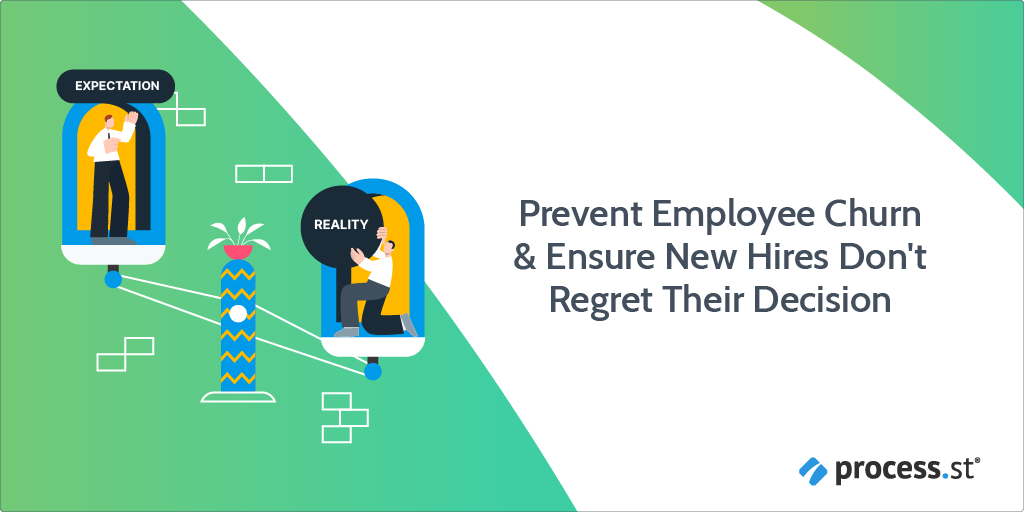
Employee churn costs about $60,000 per employee, without taking into consideration the indirect costs such as lost business, lower morale, lost productivity, and the time and resources spent on candidate selection before hiring someone.
As a manager, preventing that from happening should be one of your top priorities. You can’t have a productive, successful team if you’re always training new members.
This Process Street post will cover why churn happens — specifically among Millennials and Gen Z in the post-pandemic job market — and what you can do to prevent it.
- Are we heading towards the Great Regret?
- Employee churn: Prevention is better than a cure
- Improve recruitment & prevent churn with process automation
Let’s get started.
Are we heading towards the Great Regret?
The Great Resignation signaled an unprecedented number of workers leaving their jobs to seek new opportunities, better pay, and more flexibility. As a result, many employers have found themselves struggling to fill these newly-open positions with the quality and caliber of the people who left them.
The pandemic’s impact on individual priorities and a desire for people to feel a sense of purpose has been targeted as the primary driver for the Great Resignation, but that is likely an over-simplification.
Millennials and Gen Z job seekers have always had different expectations of employers than previous generations; the shift in working conditions during the pandemic only solidified that by showing how possible those expectations actually are to achieve.
However, as some have pointed out, one job is not necessarily better — or any different – from another. This has led to many of those who resigned in 2021 regretting their decision. In an article from The Guardian, Gene Marks referred to this phenomenon as “the Great Regret” and suggested that it may be some time before the job market restabilizes as people continue to evaluate their situations.
As the chart from McKinsey & Company shows below, 36% of those who quit in the 6 months prior to the survey didn’t have another job lined up. Over the following 6 months, 64% of those likely to quit would be willing to leave without another position.
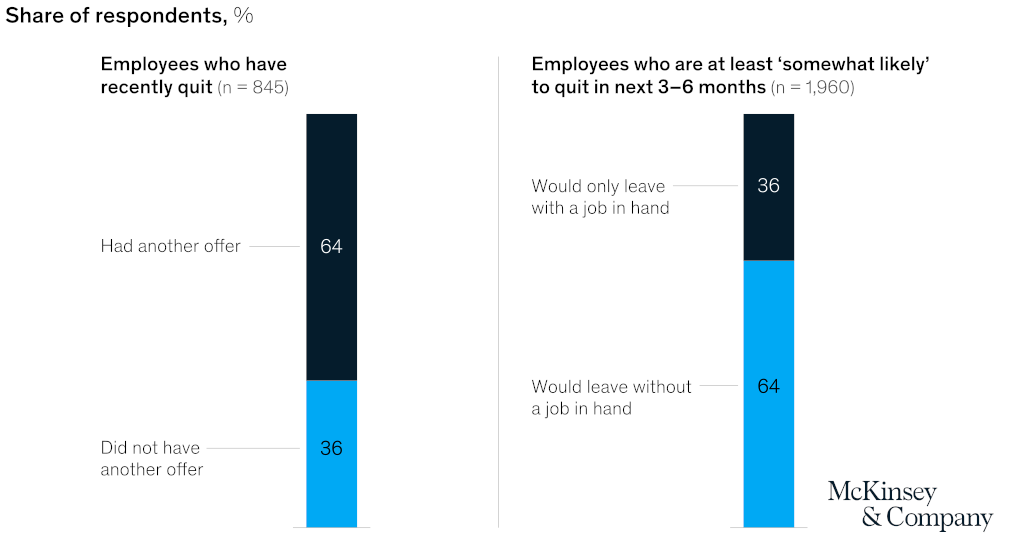
How has the Great Resignation impacted employee churn rates?
During the Great Resignation, employee churn rates skyrocketed. With the sheer number of employees leaving their previous employers, this is no surprise.
However, companies did not see an equal rise in new hires. A number of those who resigned from their previous positions decided to strike out on their own, preferring freelancing or self-employment to the restrictions of working for someone else.
Another segment decided not to return to work at all and instead take time out to evaluate what they wanted from life. Add that to the already increasing number of Baby Boomers reaching retirement age and insufficient numbers of Millennials and Gen Z workers to replace them, companies are hurting when it comes to retention.
What are the top reasons new hires regret changing jobs?
Focusing too much on money.
76% of Millennials said they would accept less pay to work for a socially responsible company.
In a quote from a recent USA Today article, one respondent said about her career switch:
“I wish I had taken more time to research [the company; the hiring process] was a little fast. […] I was crying and asking myself: Why did I leave someplace I loved so much? I let money get in the way.”
– Sara Norton-Sanner, Most recent job quitters have regrets or don’t plan to stay in new role
Pay and benefits certainly figure into a job seeker’s decision to work for a particular company, but salary is no longer the end-all-be-all for setting yourself apart from the competition.
The contemporary workforce is no longer satisfied with a job that merely “pays the bills.” They want a sense of purpose and to feel that their employers share their values and concerns. Involvement in social issues and the implementation of ethical and sustainable practices are also primary concerns.
A study found that an increased salary doesn’t increase happiness or satisfaction as much as is generally believed. Higher pay does increase job satisfaction up to a point, but after that (around $75k/year) pay increases have little to no effect on an employee’s happiness at work.
So, you might be able to woo a prospective candidate over to your side with a promising salary, but money alone isn’t enough to keep them.
Employee churn: Prevention is better than a cure
If you don’t start thinking about employee churn until you’ve got them in the building, you’re already behind.
Churn prevention starts from the very moment you realize you need to hire someone to fill a role. If you wait until you’ve already hired them – or worse, until they’ve been with you a few months – it’s too late. The groundwork has already been laid and there’s actually very little you can do to sway them from that all-important first impression.
To prevent employee churn you need to:
- Clarify your own needs and expectations;
- Attract the right people with the right qualifications;
- Attract the right people for your company culture;
- Clarify the candidate’s needs and expectations;
- Keep the entire process from application to onboarding efficient, effective, and error-free.
Start with the basics:
- What will the role entail?
- What are the essential requirements?
- What are the desired requirements?
- What’s your budget for recruiting, hiring, training, salary, and benefits?
- Are your expectations reasonable and realistic?
That last one is the real kicker, and you’ll ask yourself that question many times throughout the process.
What is “shift shock” & why should you know about it?
“I call this […] ‘shift shock’ to distinguish it from ordinary new-job jitters. It’s normal to feel nervous starting a new job, but it can be a big problem to be hired into a role with one set of responsibilities and then be expected to perform another.”
– Kathryn Minshew, CEO & co-founder the Muse, If You Already Hate Your New Job, It’s Fine to Quit
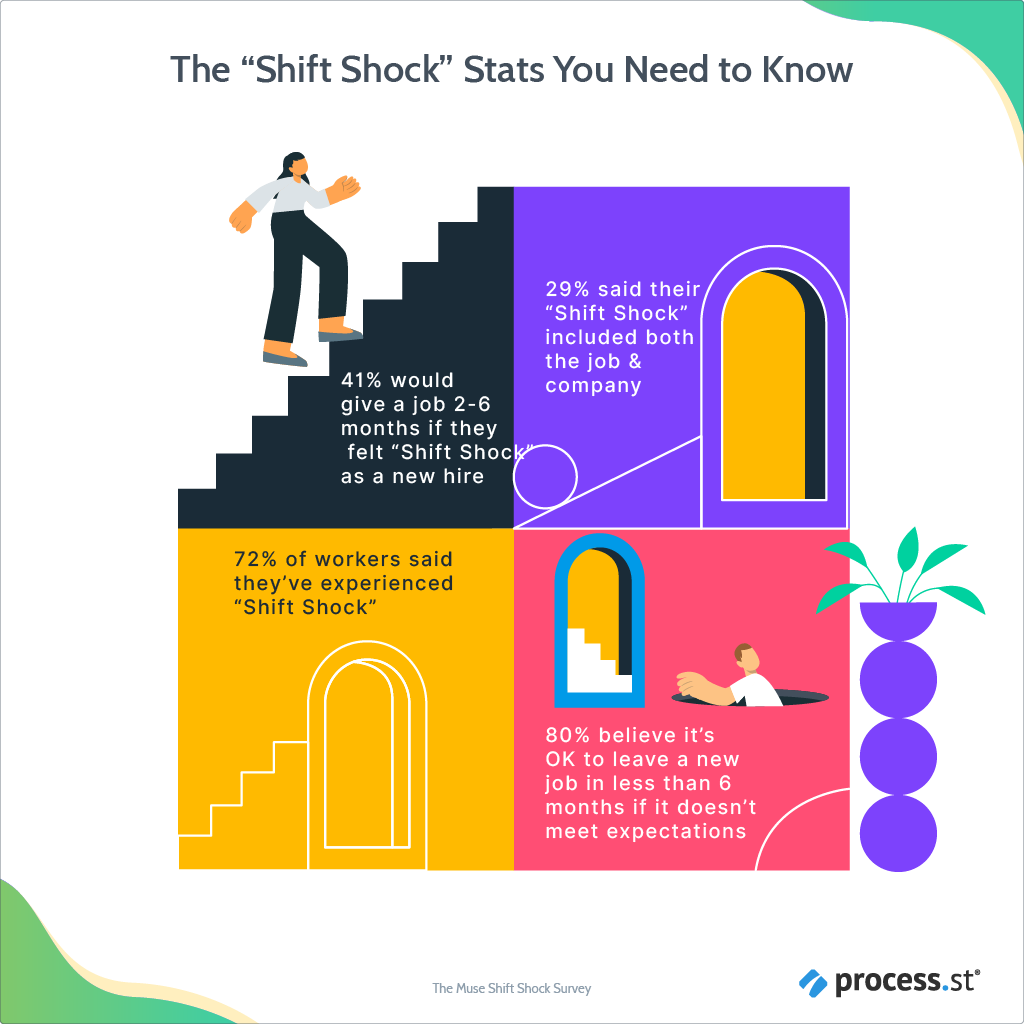
Shift shock is the result of mismatched expectations and a failure to communicate what those expectations actually are.
Is your job description clear and specific enough to attract the right candidate? Was your interview process thorough enough? Did the candidate ask enough of the right questions? Did you?
Replacing an employee is expensive. You literally cannot afford to do it more than necessary. In addition to the financial cost and spent resources, your company’s reputation and existing employee morale will suffer.
A company known for high turnover is not a company job seekers are eager to join. They’ll presume that there’s something wrong with your company – whether it’s mismanagement or declining profits or something else – and determine that, as an employer, you are not a good investment.
Internally, if your employees see many of their colleagues leaving, they’re going to start feeling insecure about their own position. Why are so many people leaving the company? How secure is their own position in the company? How secure is the company?
Once that niggle of doubt is there, you’ve lost them. They are primed and ready for another company to swoop in and offer them security, support, and probably a higher salary, too.
5 things that make your job description ineffective
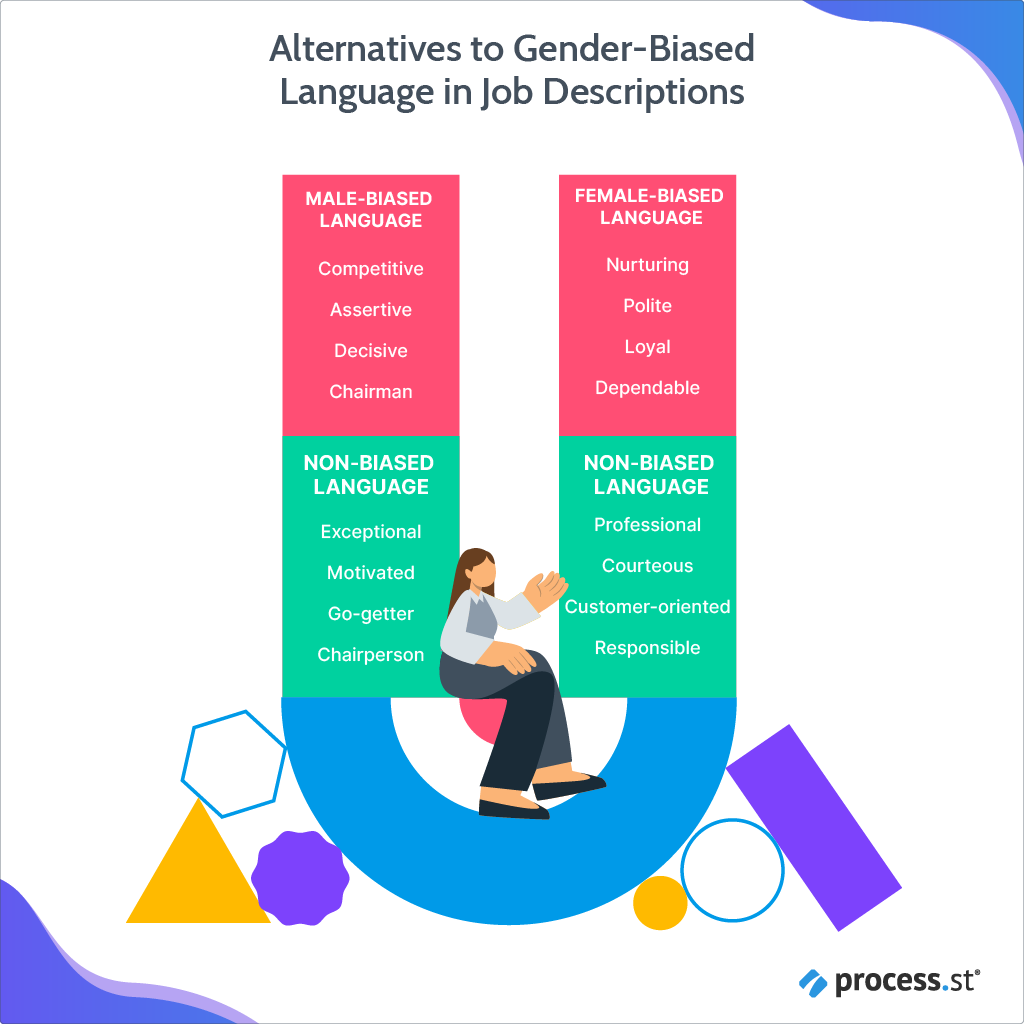
The traditional job posting just doesn’t cut it anymore. Job seekers are able to scan hundreds of job descriptions in a very short time so you need to make sure yours stands out.
According to a study by LinkedIn, the part of a job description that is most important to candidates by an overwhelming majority (61%) is compensation. Candidates want to know if it’s worth their time to check out your company and apply for the position.
After compensation, job seekers want to know about the job details and qualifications (both tied for importance by 49% of respondents).
If you don’t start off with those 3 things, you don’t even have to worry about whether or not your posting is effective.
When writing your job description, make sure you follow these best practices:
Best practices for a transparent selection process
Don’t sell what you can’t deliver.
Prospective candidates are your customer and your company is your product. You want them to want to work for you, but over-selling or making promises you can’t live up to is not the right foot to start off on.
Transparent employee selection begins and ends with trust and honesty.
Ensure your job description is clear. Be honest about the ugly parts of the job. Make sure your candidates know exactly what they’re getting themselves into so it won’t be until further on in the recruitment process that everyone realizes it’s been a waste of time.
No one likes wasting their time.
Stick to a timeline – and keep it short. Recruitment can be a long, drawn-out process and if it goes on too long, you risk losing a promising candidate. They may decide that your company is disorganized or poorly managed. It’s even possible that a more agile competitor will make them an offer more quickly.
You need to keep the recruitment momentum going and keep the candidate engaged. The last thing you want is to go silent for months only to pop up after the candidate’s completely forgotten about you to schedule an interview.
There are more jobs than people. Job seekers don’t need to wait on you to get around to them.
Be upfront about the salary. If you don’t advertise the salary with the role, you aren’t likely to get the most qualified candidates. Job seekers tend to presume that a posting that doesn’t include a salary range means the salary range is lower than average. Why would you apply to a company that didn’t want to pay what you’re worth?
Why would you want to apply to a company that isn’t honest from the beginning?
Outline the entire process to each candidate so they know exactly how long it will take, what they can expect, and how they should prepare. Again, no one likes wasting time, and if the candidate doesn’t have a clear idea of the process, you risk alienating them or losing them to someone else.
If you can’t communicate properly during the recruitment process, how well do you communicate with your employees?
Finally, give feedback. The thing all candidates hate the most is going through the recruitment process and never hearing anything back. Most candidates will even appreciate a standardized decline email than no communication at all.
If you’re able to provide more specific feedback, it’s helpful for the candidate to know how they weren’t successful. That’s not always possible or realistic, however, so, at the very least let the candidate know their application hasn’t been successful.
Holistic interview process: Obvious isn’t always best
There are more jobs than people. The days of employees working for the same company – or even in the same industry – for decades are gone. Soft skills, transferable skills, and tacit knowledge are both becoming increasingly valuable and increasingly predominant within the contemporary job market.
A standard résumé or the more detailed Curriculum Vitae can give you a general overview of a candidate’s skills and abilities, but you won’t be able to judge their actual efficacy on qualifications alone.
Many employers are now using a “test project” as a stage in the recruitment process to address this very problem.
Once a candidate’s résumé has passed inspection, the hiring manager will reach out to assign the candidate what is, essentially, a homework assignment. This test is a small, quick task related to the prospective role for the candidate to complete so the recruiter can determine their ability to do the job.
“We never want to add things to the process that might make certain types of candidates less likely to apply. But we also know that interviews may reflect more how good someone is at interviewing, than how effective they’ll be in a given role. [We] try to create a project for every role, but work hard to not make the projects take too much time.”
– Jay Hanlon, People & Operations Advisor
If the candidate performs well on the test, then they move on to the next stage, which is typically an interview or series of interviews with various individuals in the organization. Ideally, these interviews should take place with people the candidate will both be working directly with and be supervised by.
Most people are already familiar with the traditional interview. The hiring manager(s) and the candidate sit in an isolated room where the manager asks standard behavioral questions and the candidate answers them.
This can be, to a certain extent, useful, but it doesn’t allow you to get a real sense of who the candidate is or how well they’ll integrate into the company. This is why multiple interviews are recommended.
Multiple interviews allow you to see how the candidate responds to different people and also provide multiple perspectives on the candidate’s responses.
“At the end of the day, it just comes down to interviews and whether you have a good feeling about the person. To mitigate the risks, we have at least three people across the team talk to them. Generally, after three interviews and the brief test, we have a pretty good read on whether or not that person would be a good fit for us.”
– Jason MacMurray, VP of Customer Success, Process Street
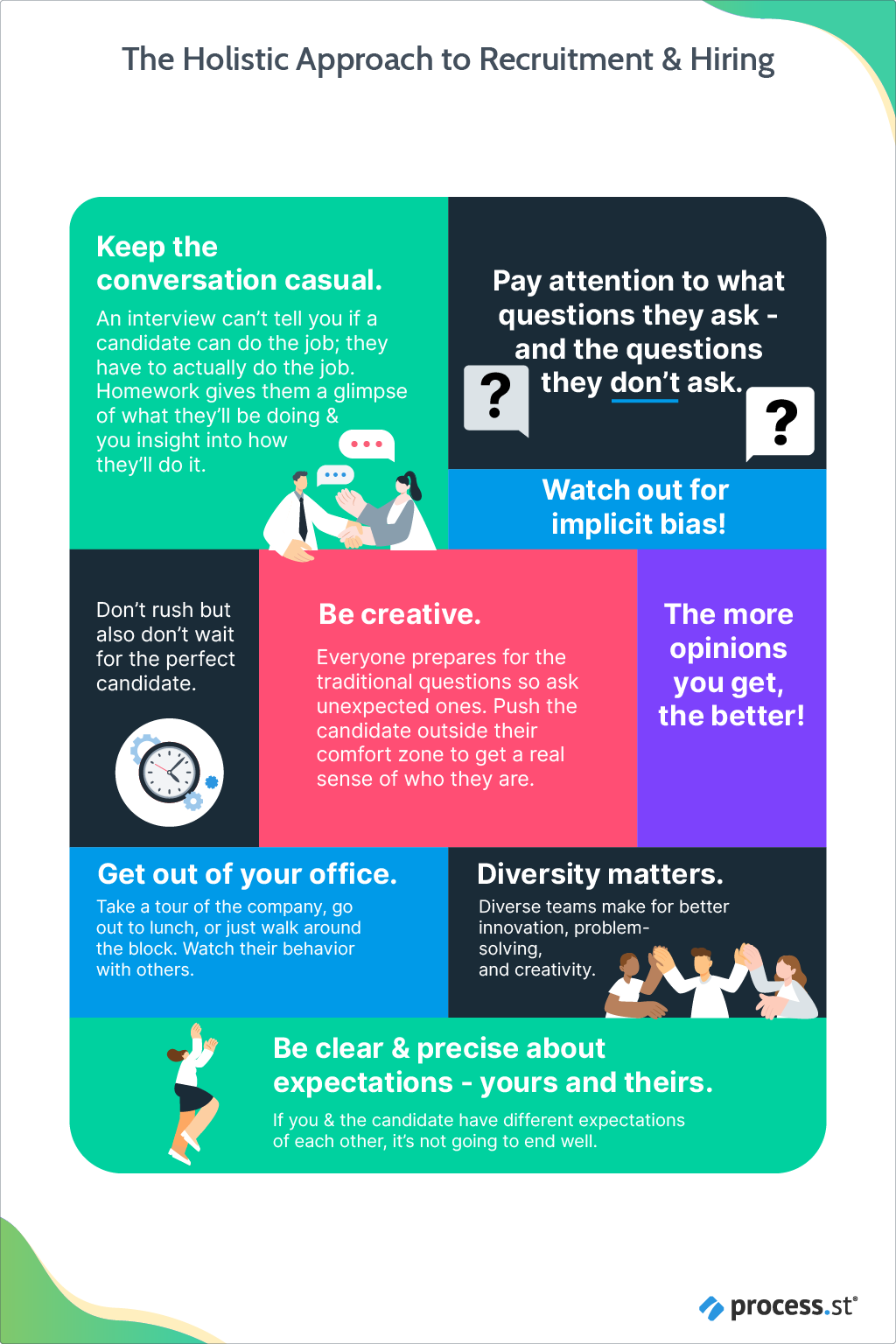
You also need to be creative with your interview process. Get out from behind your desk and show the candidate around the office. Introduce them to potential coworkers and watch their body language during those interactions.
Get out of the building and go for a walk or grab lunch. You want the candidate to be relaxed so they act more naturally, and putting them in a neutral environment will encourage that.
Ask more specific questions about them as an individual. What are they passionate about? Are they an avid movie-goer? Maybe they’re really into the local music scene. Find a way to get them talking – and talking a lot – about anything.
The application and project stages are about skills and knowledge; the interview should be about the person and how well they fit with your organization.
Improve recruitment & prevent churn with process automation
The recruitment process is complicated, involves multiple people across multiple departments, and is rife with the potential for human error.
Automating your recruitment process cannot alone prevent that but ensure that every candidate has the same experience every time.
This Job Description Template is a good example of how automation can improve your process and prevent employee churn down the road:
This workflow walks you through every step of creating a job description that is clear, precise, and thorough. As you move through the tasks, you’re prompted to specify important elements like responsibilities, qualifications, and salary.
The workflow also involves several unique Process Street features like approvals, which allow for easy sign-off on the job description before it gets posted. Adding approvals to stop tasks is a great way to standardize your processes and reduce human error.
You can use this workflow right away or edit it to add more features. Conditional logic is a powerful feature that allows you to use the same workflow for multiple instances.
For example, over time, you’ll need to hire employees for various roles and various departments. You could have a separate workflow for each instance, or you could use conditional logic and only need one workflow.
Conditional logic uses an if/then format that allows multiple paths within a process depending on what information is put into the workflow. If you want to create a job posting for an accountant, for example, you can create a task early in the workflow asking which department the posting is for.
Once you select “accounting,” only the tasks related to that specific posting will appear and all the unnecessary information will remain hidden.
Process Street Automations and Pages are also impressive tools to make all of your HR processes transparent, current, and flexible.
Pages is a free-forever, no-code knowledge management system that can be accessed from any location. Store all of your important documents from SOPs to employee handbooks in Pages and never worry about outdated processes again.
With Automations, you can easily connect Process Street to your other work apps to export data, send messages, create emails, or even launch an entirely new workflow.
Not only can you reduce churn by making sure your recruitment process is effective and efficient, but you can do the same for all of your processes, reducing the amount of tedious repetitive tasks your employees have to do.
Have you automated your recruitment yet? Let us know in the comments below!







 Workflows
Workflows Projects
Projects Data Sets
Data Sets Forms
Forms Pages
Pages Automations
Automations Analytics
Analytics Apps
Apps Integrations
Integrations
 Property management
Property management
 Human resources
Human resources
 Customer management
Customer management
 Information technology
Information technology



Leks Drakos
Leks Drakos, Ph.D. is a rogue academic with a PhD from the University of Kent (Paris and Canterbury). Research interests include HR, DEIA, contemporary culture, post-apocalyptica, and monster studies. Twitter: @leksikality [he/him]